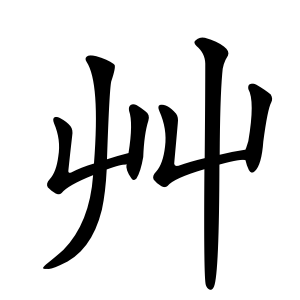艸
- grass, herb;
It representing the general category of herbaceous plants.
Etymology
Usage in Korean
艸 is considered a somewhat unfortunate character because it has largely been replaced by 草 in regions like Taiwan.
In Japan, regardless of whether the old (kyūjitai) or new (shinjitai) forms are used, 草 is the standard character, and 艸 is not even included in the list of commonly used kanji (jōyō kanji).
Thus, 艸 is rarely used independently today.
Alternative forms
Characters with 艸
9 strokes
10 strokes
12 strokes
13 strokes
14 strokes
15 strokes
16 strokes
17 strokes
18 strokes
21 strokes
艸
풀
초
pul
cho
Kangxi radical:140
Strokes:6
Unicode:U+8278
Cangjie input:
- 山山 (UU)
- 難山山 (XUU)
Composition:
- ⿰ 䶹 屮
